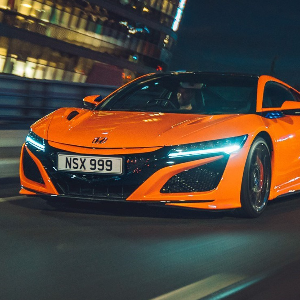
The Cupra Formentor is the first standalone model from Seat's performance arm. Andrew English finds out if it lives up to the hype.
Cupra, the portmanteau name encompassing ‘Cup’ and ‘Racing’, is Seat’s sporting sub brand, or at least it was. The Cupra badge first appeared in 1996 on a rallying derivative of the Ibiza hatchback, then a series of piping-hot hatchbacks, together with a shooting break and an SUV. Sitting somewhere between Ford’s RS and ST sub brands, the Cupra moniker has been well received as a credible marker of upgraded performance, but Seat had bigger ideas for its sporting badge.
Whether Cupra is a big enough name to be launched as a stand-alone brand remains to be seen, but this, the Formentor, named after a Majorcan peninsula, is the first of this new marque. It is a low-riding crossover/SUV, which is the market segment where the Cupra badge will concentrate its efforts in future.
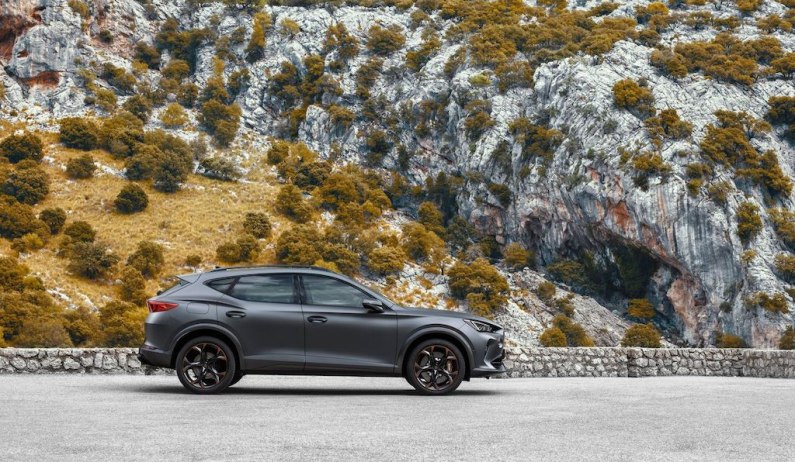
Is this a good idea? The history of launching new premium/sporting badges in Europe is strewn with the corpses of marketing hubris, witness Nissan’s humiliating withdrawal of its Infiniti brand in Europe last year. In Cupra’s case the plan is the responsibility of Luca de Meo, former Seat boss who left for the top job at Renault three months ago. The phrase, ‘he who proposes, disposes’, springs to mind here, although to be fair, de Meo’s got a strong track record at sporting sub brands, at Fiat he masterminded the re launch of Abarth, at Audi he guided the growth of Audi Sport and he has just outlined his plans for Renault’s Alpine brand.
Formentor will face stiff rivalry even from other marques in the Volkswagen Group stable. The Seat Ateca Cupra and Volkswagen’s T-Roc R, for example, share the same MQB A1 platform, although unlike the Ateca which is built in a Skoda plant and the T-Roc which is built in Portugal, the Cupra was designed, developed and is built at Seat’s massive Martorell plant in Northern Spain.
And what a looker it is. Designer Alejandro Mesonero-Romanos has had a lot of fun here, with a beaky, brooding presence reminiscent of and possibly out-menacing Lamborghini’s Urus. It’s perhaps weaker as your eyes travel back along the 4,450mm length, but there’s not much as distinctive as this in the market sector – Cupra isn’t a car for shy retiring types.
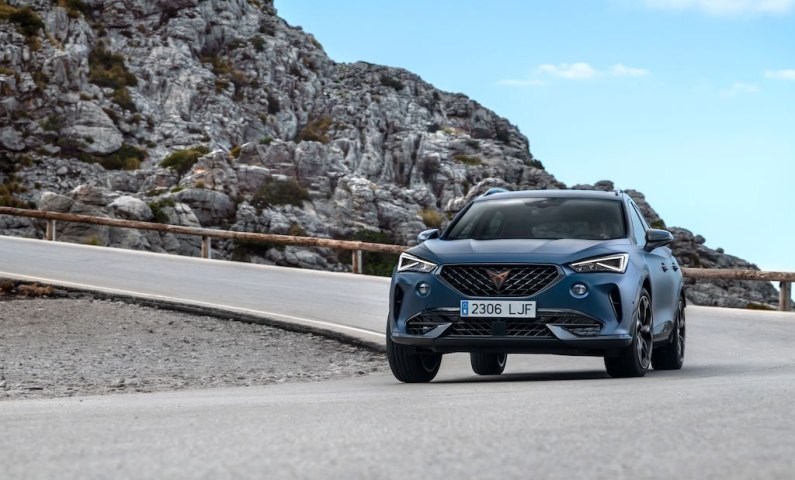
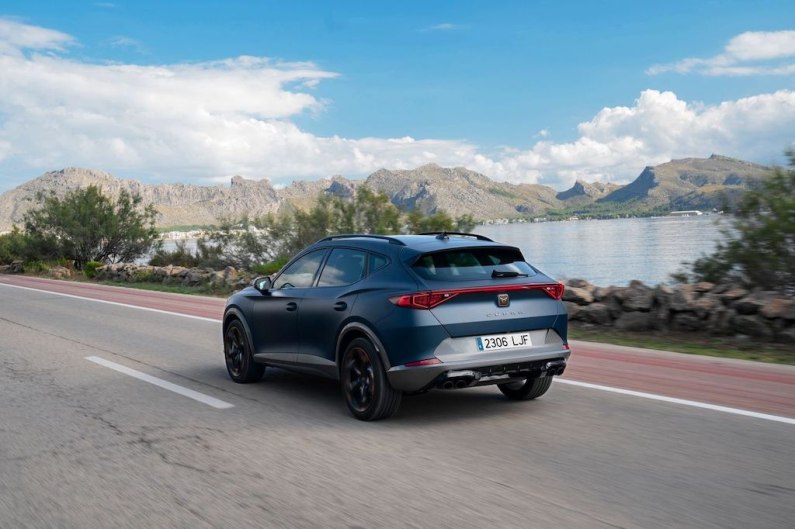
And what exactly is that market sector? Good question. It’s not a cheap deal by any means. This top-model VZ edition Formentor costs £43,840, which means you’ll be paying luxury car tax on top of vehicle excise duty. Yet the Cupra isn’t over priced for the class; Audi’s smaller SQ2 in top-model Vorsprung trim is £43,770, Jaguar’s E-Pace in high performance P250 R-Dynamic HSE trim is £44,865.
It’s on sale now with first deliveries in December, but in time there will be cheaper Formentors, with a trim range that starts at the slightly unfortunately named V1 and V2, and there’ll be other drivetrains including front-drive and the VW Group 1.5- and 2.0-litre TSI petrol turbo units. Of most interest to company-car drivers, perhaps, will be the tax-friendly plug-in hybrid petrol with a 150PS 1.4-litre petrol engine, a 115PS electric motor and a 13kWh lithium-ion battery. And while there’s no word about the diesel, the fuel cap on this turbo petrol model had a blanking plug over what looked very like an AdBlue tank filler.
The other thing that marks this car out is its extraordinary petrol-blue satin finish paint with copper highlights. In the UK this semi-matt paint option was rejected as too vulnerable and expensive to respray for the amazing 2017 Leon Cupra R, but the company has allowed its use on the Cupra brand and it is covered by the warranty, though the washing instructions are the work of an evil genius.
In the cabin, there’s also genuine flair, albeit using VW parts-bin components. So, the switchgear, the highly frustrating 12.3-inch centre touch screen, which replaces a lot of conventional buttons and switches, the squared-off leather-covered steering wheel and the digital instrument binnacle are familiar Group parts, but they are lifted by the inclusion of soft and comfortable blue-leather bucket seats, door panels and the rear seat bench. Copper stitching looks intriguing and the cabin lighting and the large sun roof fill the space with light.
There’s all the latest camera-and-radar based safety braking systems, as well as the connectivity to make the predictive cruise control able to moderate speed when it knows there’s a set of road works round a blind corner.
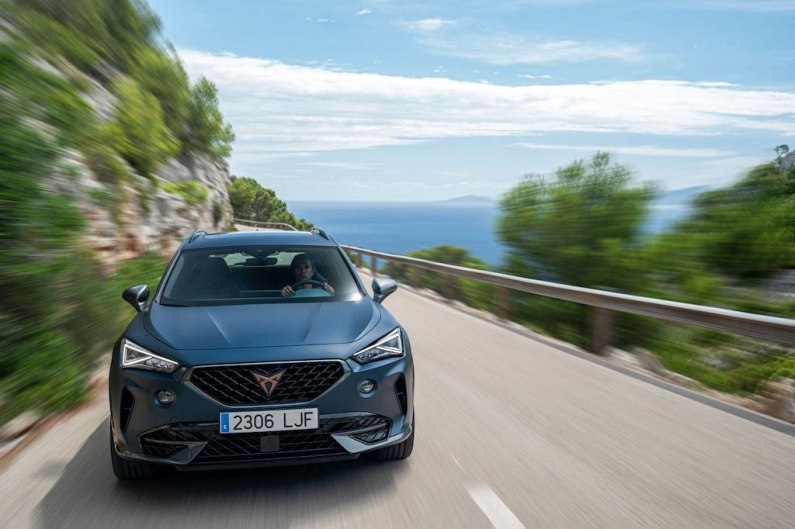
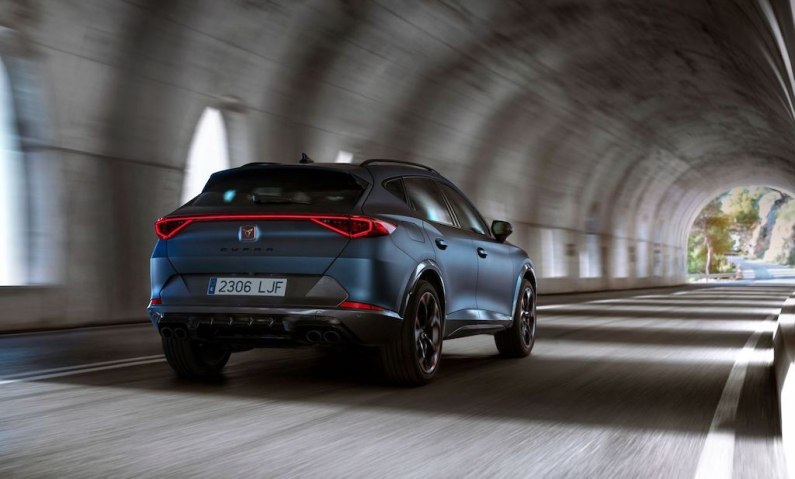
The accommodation up front is spacious around the front seats with lots of storage space. The rear bench is more than big enough to accommodate a couple of six-foot adults with leg and head room to spare. A 420-litre boot is a decent size for the class, with room for a space saver spare wheel under the load bed floor were it not for a gigantic loud speaker in there. The seats fold 60/40 per cent on to their bases so the load bed isn’t entirely flat.
Under its aggressively angular coachwork the Formentor rides on MacPherson strut front and multi-link rear suspension, with the same automatically adjusting dampers as the current Golf GTI. This chassis technology can also be set up manually with a system over ride. The engine is the VW Group two-litre turbo punching out 306bhp and 400Nm (295lb ft) of torque, which also does service in the Audi S3 and the VW Golf R. Transmission is the seven-speed, semi-automatic twin-clutch DSG unit driving all four wheels via an electronically controlled multiplate clutch distributing the engine’s effort front and rear. A large button on the steering wheel cycles through various drivetrain and suspension modes: Comfort, Sport, Cupra, Individual and Off-Road.
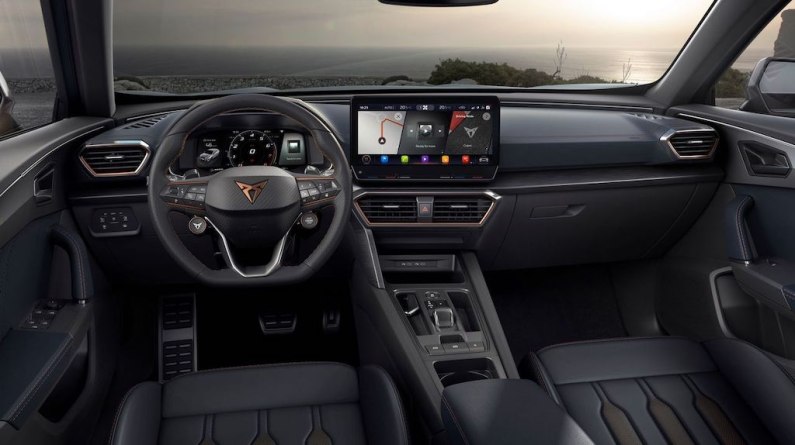
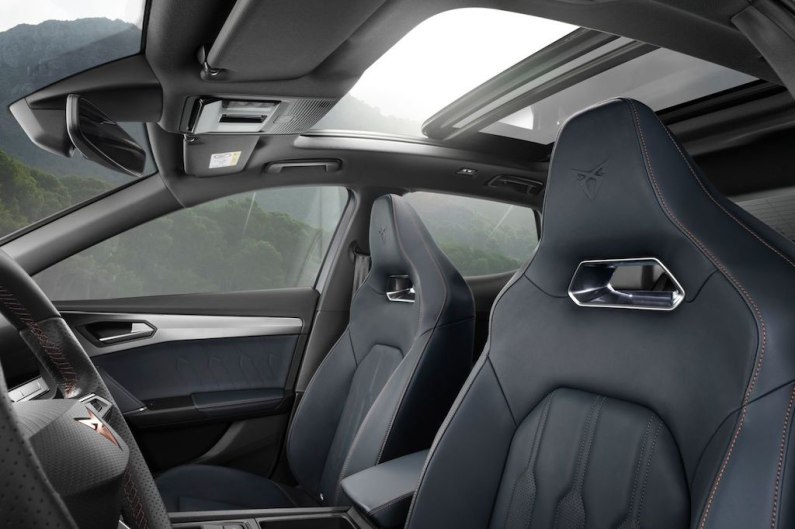
In the cabin the engine has an over-accentuated, artificial warbling racket in anything but Comfort setting, but it’s flexible and powerful, firing this low-slung crossover up the road with some vim; top speed is limited to 155mph, with 0-62mph in 4.9sec. The DSG gearbox smoothes its changes and never allows this highly boosted unit to rest until you ease the throttle and cruise at motorway speeds. On a mixed route of mainly A and B roads, it delivered an overall consumption of 27.5mpg against quoted WLTP figure of 33.2mpg.
Around town the engine is docile, though the gearbox shunts occasionally and with the stop/start engine system, there’s a delay while it restarts, engages first and responds to the accelerator. It’s only half a second or so, but it feels like an eon when the Scania is bearing down on you. At 1.9 metres wide without the mirrors, it’s a wide car, but visibility out front is good and it’s easy to place the nose in corners and when parking, although the rear three-quarter views are obscured by the coachwork kick up behind the C pillars.
Put some curves in the road and the big 19-inch Bridgestone Turanza dual-purpose tyres provide a beefy turn in and strong grip on quite greasy surfaces. There’s not a lot of feedback to the wheel rim, however, and the self-centring action is wrist-achingly strong. At almost 1.6 tonnes, this is quite a lot of this car to be hurling round, but it manages it role as a quick crossover pretty well, even if it is a bit of a point-and-squirt machine. Four-wheel-drive traction is excellent and the ride isn’t bad either, with the smart damping dealing well with small bumps and ripples. Larger, sharp-edged bumps make their presence felt and there’s a lot of side-to-side tossing when the road edges are worn out, but I’ve driven a lot worse SUVs.
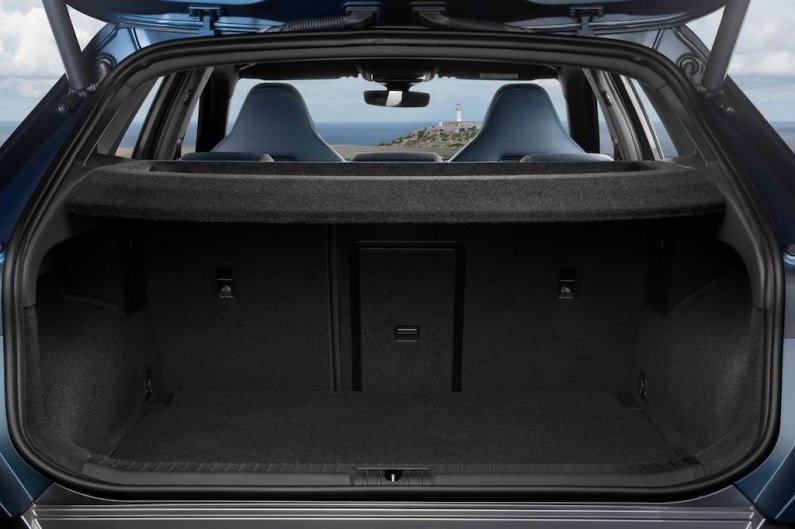
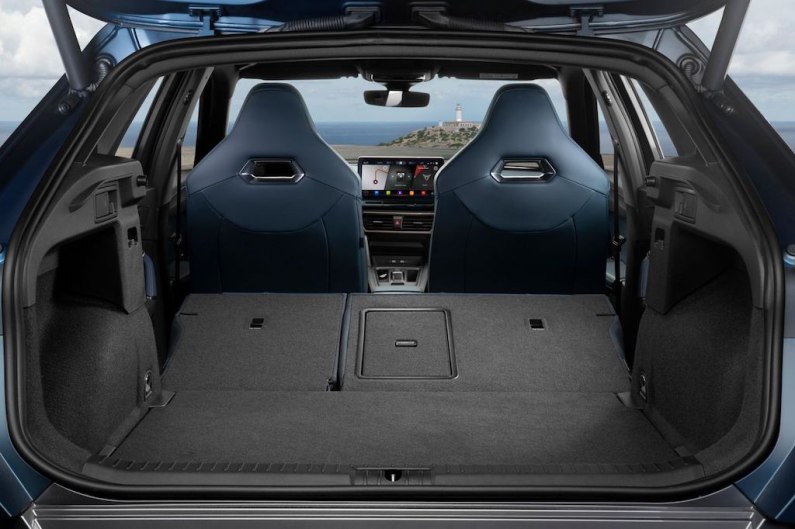
It's not really a criticism to say the Cupra feels more like a well-engineered front-drive crossover than a 4x4 supercar, but it’s quite a compelling thing nonetheless. Part of that comes from the body’s dramatic style and the clever mix of luxury and regular Seat bits in the cabin – those sports seats are wonderfully comfortable and supportive. As a rapid all-weather conveyance, while it’s no BMW M5 the Cupra has its charms, and outside of the Lamborghini Urus, there’s nothing like it on the market at least at the price.
The Facts
Cupra Formentor
Price: £43,840 as tested
Engine: 2.0-litre turbocharged four-cylinder
Power/torque: 306bhp @ 5,450rpm/400Nm @ 2,000rpm
0-62mph: 4.9sec
Top speed: 155mph
Fuel economy: (WLTP high) 33.2mpg, 27.5mpg on test
CO2 emissions: 175/km
VED Band: £870 first year, then £150 a year plus £325 a year for the first five standard years
